The Catalyst Killing - [40]
We carried on to the bedrooms. Trond Ibsen and Anders Pettersen had each a room to themselves by the front door. Then there was the double room where Kristine Larsen and Miriam Filtvedt Bentsen had slept, and the double room where Falko Reinhardt and Marie Morgenstierne had shared their last nights together.
I made an attempt to sneak past the door without any shoes on, but the floorboards creaked loudly under my feet and Miriam heard me straight away from the bed in the room where she had slept. It seemed unlikely that anyone could have sneaked out that way.
Miriam had been right about the window, much to her relief. It was high up on the wall and no more than twelve inches wide. I had to stand on a chair to reach it, and even then could barely stick my head out through the opening. It would not have been possible for Falko Reinhardt to squeeze his body out through the frame.
In short, two of three possible ways in which Falko Reinhardt could have left the cabin were swiftly eliminated. Miriam looked at me with great curiosity when I said that I had another theory to test. Then she sent me a pleading look when I asked to be left on my own in the room for a few minutes. She was, however, very disciplined and obedient by nature, and took her book out of her bag without protest when I shrugged apologetically and pointed to the living room.
I spent the next quarter of an hour making a crude investigation of the room’s walls, ceiling and floor. Everything looked pretty normal, and I was sceptical of Patricia’s theory to begin with. And my scepticism in no way diminished when I had tapped my way across all four walls, including the cupboard, and across the few feet of open floor.
However, my pulse started to race when I discovered first one and then two more loose nails in a floorboard under the bed where Falko and Marie had slept.
My excitement increased when it turned out that the double bed was not attached to the floor in any way.
I pulled it to one side and took out the four loose nails in the floorboard, and could then confirm that a space just wide enough and deep enough to hide a person had been dug out below. And none of the nails in the floorboard in question, nor the one beside it, had been hammered in properly.
I stood there looking down at the secret chamber. It was easy enough to picture it now. Falko Reinhardt had either discovered or dug out this space himself beforehand, and on the night of the storm, he had loosened the floorboards and slipped down there. I stood for some time and pondered why he might have done this.
I then went to get Miriam, told her about the cavity under the bed and asked her if she had ever seen or heard about it before. She looked at me, impressed, and with naked curiosity peered down into the secret hollow. She shook her head firmly and assured me that it was not something she had heard about – or even imagined existed.
When I asked if it could have been Falko Reinhardt she saw going in the other direction that stormy night, Miriam Filtvedt Bentsen nodded eagerly. The thought had crossed her mind and was certainly not entirely implausible.
‘In which case, he then obviously left the cabin of his own accord, having first planned his escape,’ she remarked in a matter-of-fact voice. I nodded my cautious agreement and said that there was much to indicate that.
There was nothing more to be found indoors. So I asked Miriam Filtvedt Bentsen to show me the way to the cliff where Falko’s shoe had been discovered the morning after he disappeared.
We found it on the third attempt. The distance to the cliff was about a quarter of a mile. When we got there, I saw the stone beside which Falko Reinhardt’s shoe had been found. It was a large white stone, almost three feet tall, and had sheltered the shoe from the wind.
The view from the cliff was spectacular. The drop was about three hundred feet down onto scree, and Falko Reinhardt could hardly have survived if he had fallen over the edge in the storm. Both Miriam Filtvedt Bentsen and I allowed ourselves to be captivated by the view for a few moments. But, as was to be expected, we found no new traces of the missing cabin guest and no new clues as to what might have happened to him.
With Patricia’s help, I had solved the riddle as to how Falko Reinhardt had left the cabin in the raging storm. But the more crucial questions as to why he had left and where he then went remained unanswered.
V
At a quarter to one, we locked the door to the cabin, got into the car and drove on to Henry Alfred Lien’s farm. The journey only lasted a matter of minutes. Miriam gave an understanding nod when I said that I could not take her in with me, and as soon as I parked the car on the driveway up to the farm, she pulled out her book.
The weather had improved and the sun was shining now. As I got out of the car, it struck me that the farm with the mountains in the background would have been a perfect motif for one of the NS propaganda posters of the 1930s.
The farmer himself, paradoxically, would not have fitted in. He was far too old, too grey and a little too fat. Henry Alfred Lien turned out to be a stocky man of around seventy. His gait was confident yet slow as he progressed across the farmyard. His face was serious and stern, as though carved in granite. And his handshake was firm when he invited me, in a not unfriendly manner, to come into the living room in the main house.
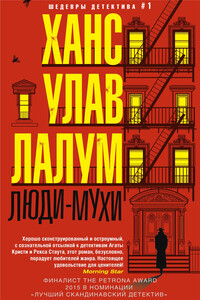
Убит бывший лидер норвежского Сопротивления и бывший член кабинета министров Харальд Олесен. Его тело обнаружено в запертой квартире, следов взлома нет, орудие убийства отсутствует. На звук выстрела к двери Олесена сбежались все соседи, но никого не увидели. Инспектор уголовного розыска Колбьёрн Кристиансен считает, что убийство, скорее всего, совершил кто-то из них. Более того, он полагает, что их показания лживы.
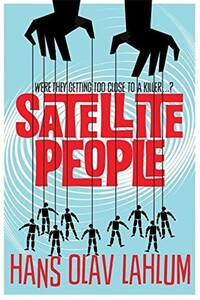
A gripping, evocative, and ingenious mystery which pays homage to Agatha Christie, Satellite People is the second Norwegian mystery in Hans Olav Lahlum's series. Oslo, 1969: When a wealthy man collapses and dies during a dinner party, Norwegian Police Inspector Kolbjorn Kristiansen, known as K2, is left shaken. For the victim, Magdalon Schelderup, a multimillionaire businessman and former resistance fighter, had contacted him only the day before, fearing for his life. It soon becomes clear that every one of Schelderup's 10 dinner guests is a suspect in the case.
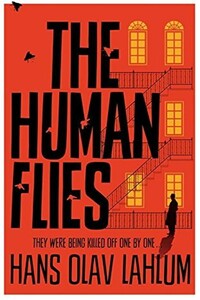
Oslo, 1968: ambitious young detective Inspector Kolbjorn Kristiansen is called to an apartment block, where a man has been found murdered. The victim, Harald Olesen, was a legendary hero of the Resistance during the Nazi occupation, and at first it is difficult to imagine who could have wanted him dead. But as Detective Inspector Kolbjorn Kristiansen (known as K2) begins to investigate, it seems clear that the murderer could only be one of Olesen's fellow tenants in the building. Soon, with the help of Patricia – a brilliant young woman confined to a wheelchair following a terrible accident – K2 will begin to untangle the web of lies surrounding Olesen's neighbors; each of whom, it seems, had their own reasons for wanting Olesen dead.
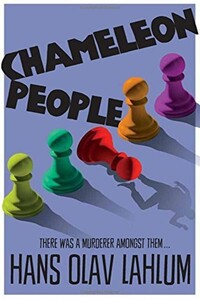
From the international bestselling author, Hans Olav Lahlum, comes Chameleon People, the fourth murder mystery in the K2 and Patricia series.1972. On a cold March morning the weekend peace is broken when a frantic young cyclist rings on Inspector Kolbjorn 'K2' Kristiansen's doorbell, desperate to speak to the detective.Compelled to help, K2 lets the boy inside, only to discover that he is being pursued by K2's colleagues in the Oslo police. A bloody knife is quickly found in the young man's pocket: a knife that matches the stab wounds of a politician murdered just a few streets away.The evidence seems clear-cut, and the arrest couldn't be easier.
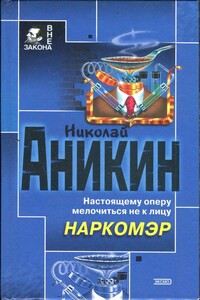
Тупик. Стена. Старый кирпич, обрывки паутины. А присмотреться — вроде следы вокруг. Может, отхожее место здесь, в глухом углу? Так нет, все чисто. Кто же сюда наведывается и зачем? И что охраняет тут охрана? Да вот эту стену и охраняет. Она, как выяснилось, с секретом: время от времени отъезжает в сторону. За ней цех. А в цеху производят под видом лекарства дурь. Полковник Кожемякин все это выведал. Но надо проникнуть внутрь и схватить за руку отравителей, наживающихся на здоровье собственного народа. А это будет потруднее…
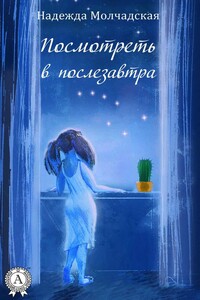
«Посмотреть в послезавтра» – остросюжетный роман-триллер Надежды Молчадской, главная изюминка которого – атмосфера таинственности и нарастающая интрига.Девушка по имени Венера впадает в кому при загадочных обстоятельствах. Спецслужбы переправляют ее из закрытого городка Нигдельск в Москву в спецклинику, где известный ученый пытается понять, что явилось причиной ее состояния. Его исследования приводят к неожиданным результатам: он обнаруживает, что их связывает тайна из его прошлого.
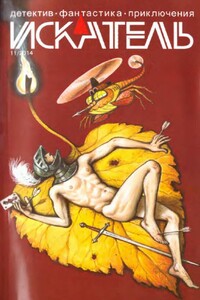
«ИСКАТЕЛЬ» — советский и российский литературный альманах. Издаётся с 1961 года. Публикует фантастические, приключенческие, детективные, военно-патриотические произведения, научно-популярные очерки и статьи. В 1961–1996 годах — литературное приложение к журналу «Вокруг света», с 1996 года — независимое издание.В 1961–1996 годах выходил шесть раз в год, в 1997–2002 годах — ежемесячно; с 2003 года выходит непериодически.Содержание:Анатолий Королев ПОЛИЦЕЙСКИЙ (повесть)Олег Быстров УКРАДИ МОЮ ЖИЗНЬ (окончание) (повесть)Владимир Лебедев ГОСТИ ИЗ НИОТКУДА.
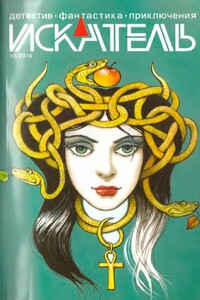
«ИСКАТЕЛЬ» — советский и российский литературный альманах. Издается с 1961 года. Публикует фантастические, приключенческие, детективные, военно-патриотические произведения, научно-популярные очерки и статьи. В 1961–1996 годах — литературное приложение к журналу «Вокруг света», с 1996 года — независимое издание.В 1961–1996 годах выходил шесть раз в год, в 1997–2002 годах — ежемесячно; с 2003 года выходит непериодически.Содержание:Олег Быстров УКРАДИ МОЮ ЖИЗНЬ (повесть);Петр Любестовский КЛЕТКА ДЛЯ НУТРИИ (повесть)
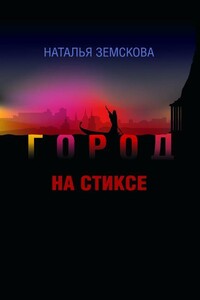
Наталья Земскова — журналист, театральный критик. В 2010 г. в издательстве «Астрель» (Санкт-Петербург) вышел её роман «Детородный возраст», который выдержал несколько переизданий. Остросюжетный роман «Город на Стиксе» — вторая книга писательницы. Молодая героиня, мечтает выйти замуж и уехать из забитого новостройками областного центра. Но вот у неё на глазах оживают тайны и легенды большого губернского города в центре России, судьбы талантливых людей, живущих рядом с нею. Роман «Город на Стиксе» — о выборе художника — провинция или столица? О том, чем рано или поздно приходится расплачиваться современному человеку, не верящему ни в Бога, ни в черта, а только в свой дар — за каждый неверный шаг.
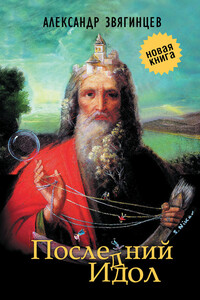
В сборник «Последний идол» вошли произведения Александра Звягинцева разных лет и разных жанров. Они объединены общей темой исторической памяти и личной ответственности человека в схватке со злом, которое порой предстает в самых неожиданных обличиях. Публикуются рассказы из циклов о делах следователей Багринцева и Северина, прокуроров Ольгина и Шип — уже известных читателям по сборнику Звягинцева «Кто-то из вас должен умереть!» (2012). Впервые увидит свет пьеса «Последний идол», а также цикл очерков писателя о событиях вокруг значительных фигур общественной и политической жизни России XIX–XX веков — от Петра Столыпина до Солженицына, от Александра Керенского до Льва Шейнина.